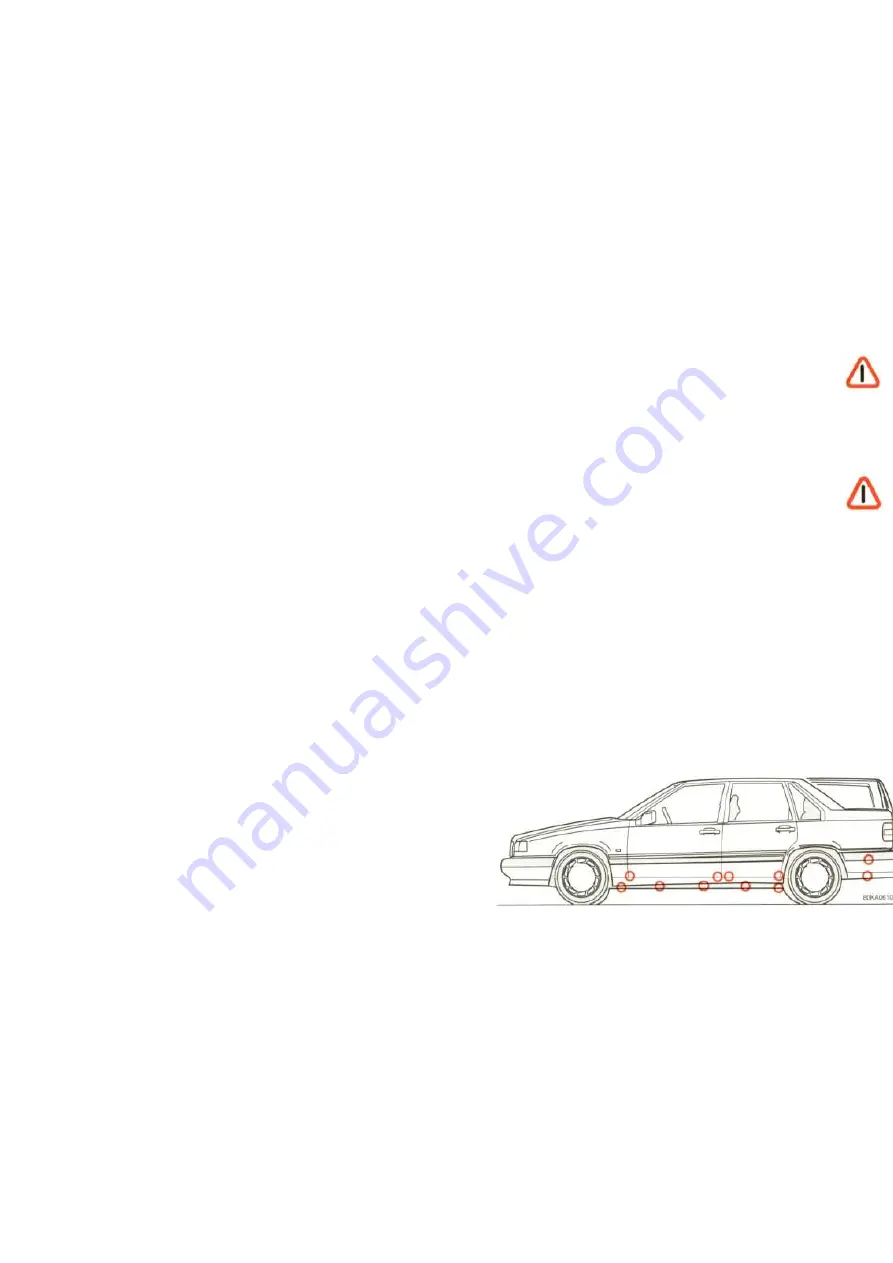
Washing
Wash the car often!
The car should be washed as frequently as possible, particularly during
the winter when road salt and moisture can easily start corrosion.
The car can be washed as follows:
•
Hose off dirt underneath the car body (wheel-arches, wing edges
etc.)
•
Hose down the entire car to soften up any dirt etc., but avoid spraying
water directly onto the locks.
•
Wash with a sponge (with or without detergent) using plenty of water.
Use preferably tepid but not hot water.
•
If the car is exceptionally dirty, first wash it with a cold degreasing
agent. This agent may only be used if the car is washed in a special
area with a floor-mounted grid featuring a sewage separator.
•
Dry with a clean, soft chamois leather.
•
Electrically-operated radio aerials (extra equipment) should be dried
thoroughly.
•
Wash the wiper blades using a nail brush and tepid washing-up
liquid.
•
When cleaning (washing) the engine, avoid aiming the nozzle at the
distributor or the rear section of the engine.
After cleaning the engine, the spark plug wells should be inspected for
water and blown dry if necessary.
Suitable detergents
Car wash detergent or a dessertspoon of ordinary washing-up liquid
diluted in 10 litres of water.
Spots on trim mouldings around windows, wings and doors can be re-
moved using a suitable car polish. Never use abrasive cutting paste or
steel wool.
CAUTION!
When the car is driven away immediately after being washed,
always gently apply the brakes several times as the car is moving
in order to dry off the brakes.
WARNING!
Do not wash the engine compartment when the engine
is warm! Fire hazard!
Bear in mind!
Remove bird spillings from paintwork as soon as possible, since they
contain chemicals which affect and discolour the paint very quickly.
Discolouration cannot be polished away. When using a high-pressure
wash, make sure that the spray gun nozzle is at least 30 cm away from
the car body. Do not spray directly onto the door, boot or bonnet locks
Note: When washing the car, remember to remove any dirt accumula-
tion from all the drainage holes.
Drainage holes
All manuals and user guides at all-guides.com
















































